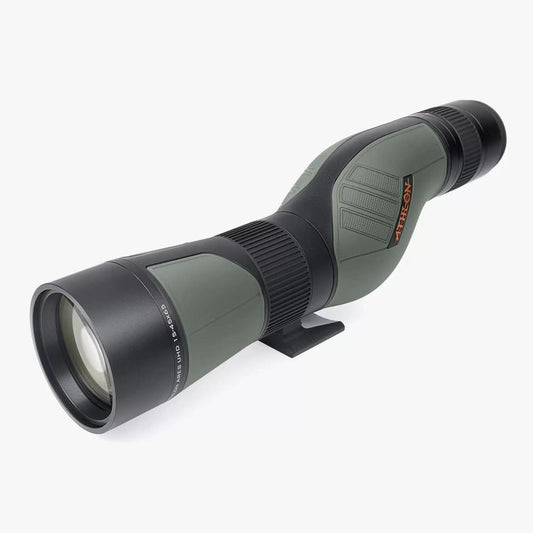

Athlon Ares G2 UHD Spotting Scope 15-45x65 Green Straight Angle provides high-performance optics for wildlife observation and tactical applications. With Extra-Low Dispersion glass, this scope ensures vibrant colors and excellent contrast, crucial for spotting details in various lighting conditions. Its rugged weatherproof design allows for reliable use in rain or shine, making it a dependable companion for outdoor enthusiasts.
Lightweight at just 3.8 lbs and featuring adjustable magnification from 15x to 45x, the Athlon Ares G2 UHD is designed for easy transportation and flexible viewing. This scope is equipped with fog-proof and waterproof capabilities, ensuring a clear view regardless of the environment. Whether you’re birdwatching, hunting, or observing nature, the Athlon Ares G2 enhances your experience with outstanding optical clarity and practical functionality.
Key Features:
- ENHANCED CLARITY for high-definition views, ideal for spotting wildlife even in low-light conditions.
- INTERCHANGEABLE EYEPIECE offers versatility, letting you switch eyepieces for different viewing needs.
- FOG-PROOF DESIGN maintains visibility in humid conditions, ensuring uninterrupted observation.
- WATERPROOF CONSTRUCTION protects against rain and splashes, making it perfect for outdoor adventures.
- LIGHTWEIGHT AND PORTABLE at only 3.8 lbs, facilitating easy transport on hiking trips.
- XPL COATING helps repel dirt and moisture, keeping the lenses clean for clear vision.
- ADJUSTABLE MAGNIFICATION from 15x to 45x allows for detailed viewing of distant subjects.
- BAK4 PRISMS enhance brightness and clarity, delivering a superior visual experience.
Technical Specifications
| Magnification | 15-45x |
|---|---|
| Lens Diameter | 65mm |
| Weight | 3.8 lbs |
| Dimensions | 16.5 x 5.5 x 5.5 inches |
| Material | Full Metal Chassis |
What’s in the Box?
- Lens covers
- Padded case
- Neck strap
Customer Reviews
“This spotting scope is a game changer! The clarity is incredible, and it's so easy to use.” – Jamie T.
“I took it on a camping trip, and it performed perfectly, even in the rain!” – Alex P.
FAQ
What makes this spotting scope different from others? The Athlon Ares G2 combines advanced optical technology with a durable design, making it ideal for various outdoor conditions.
Can I use this for birdwatching? Yes, its clarity and adjustable magnification are excellent for observing birds at different distances.
Is it easy to maintain? Yes, thanks to the XPL coating, cleaning is hassle-free as it repels dirt and oil.
How does it compare to competitors? The Ares G2 offers superior optical performance at a competitive price point, making it a smart choice for enthusiasts.
Is it suitable for long-range shooting? Yes, its interchangeable eyepiece allows for tactical applications, making it suitable for precision shooting.
Similar Models
Looking for more options? Discover our extensive Athlon lineup, including models like the Athlon Talos 20-60x80 for larger viewing and Athlon Midas 12-50x60 for compact performance. Explore our full collection for exceptional optics tailored to your adventures!
You May Also Like
Here’s some of our most similar products people are buying. Click to discover trending style.






